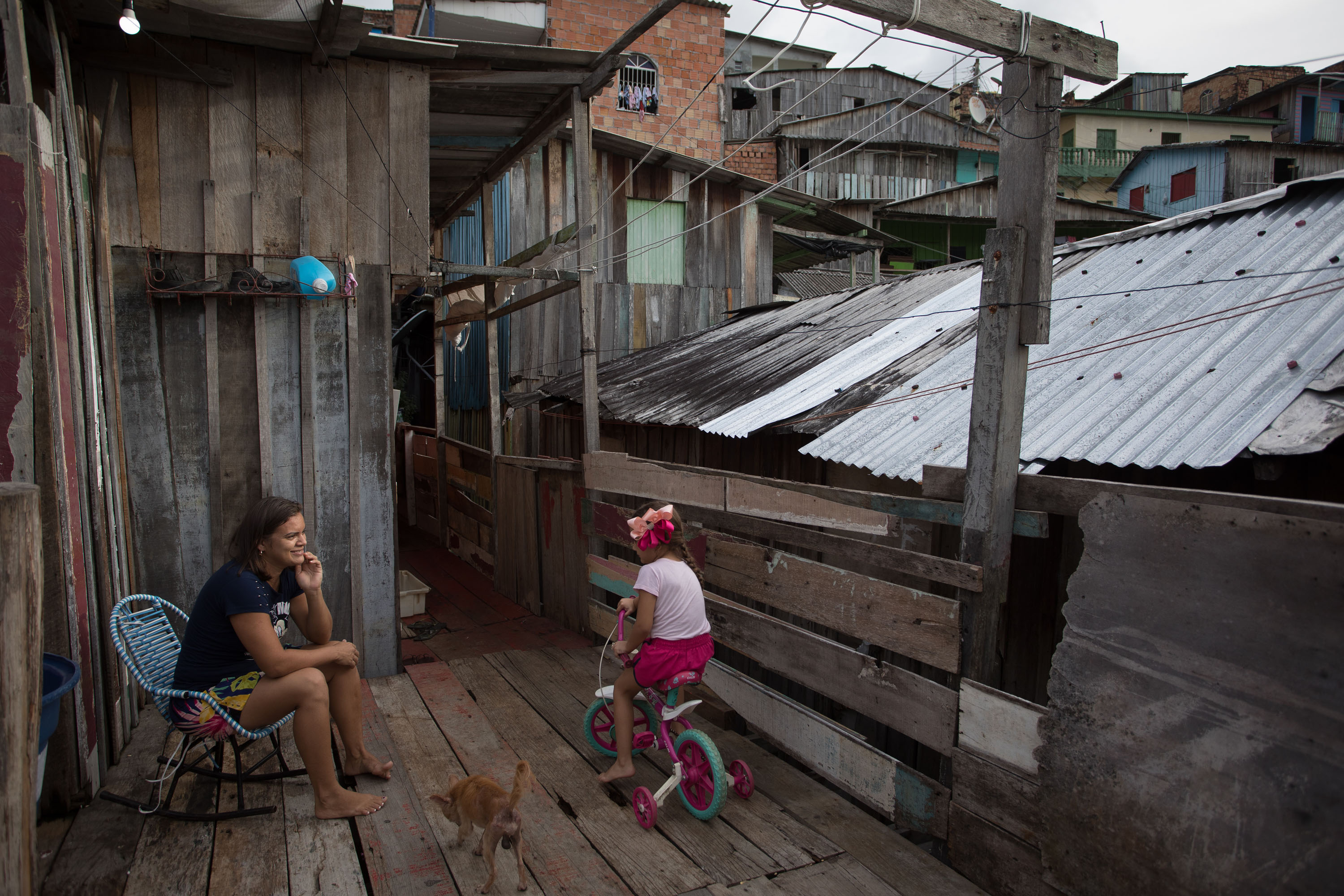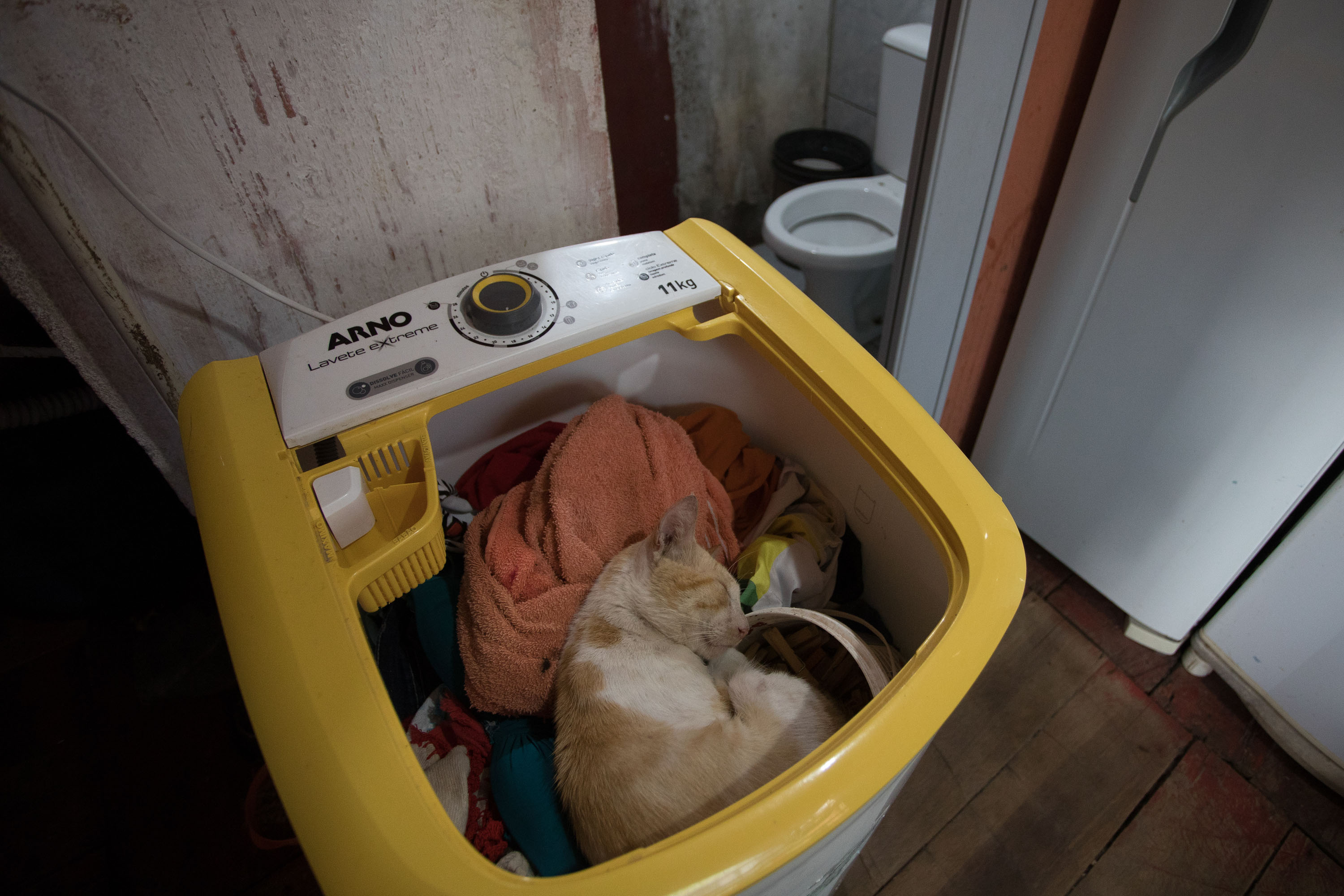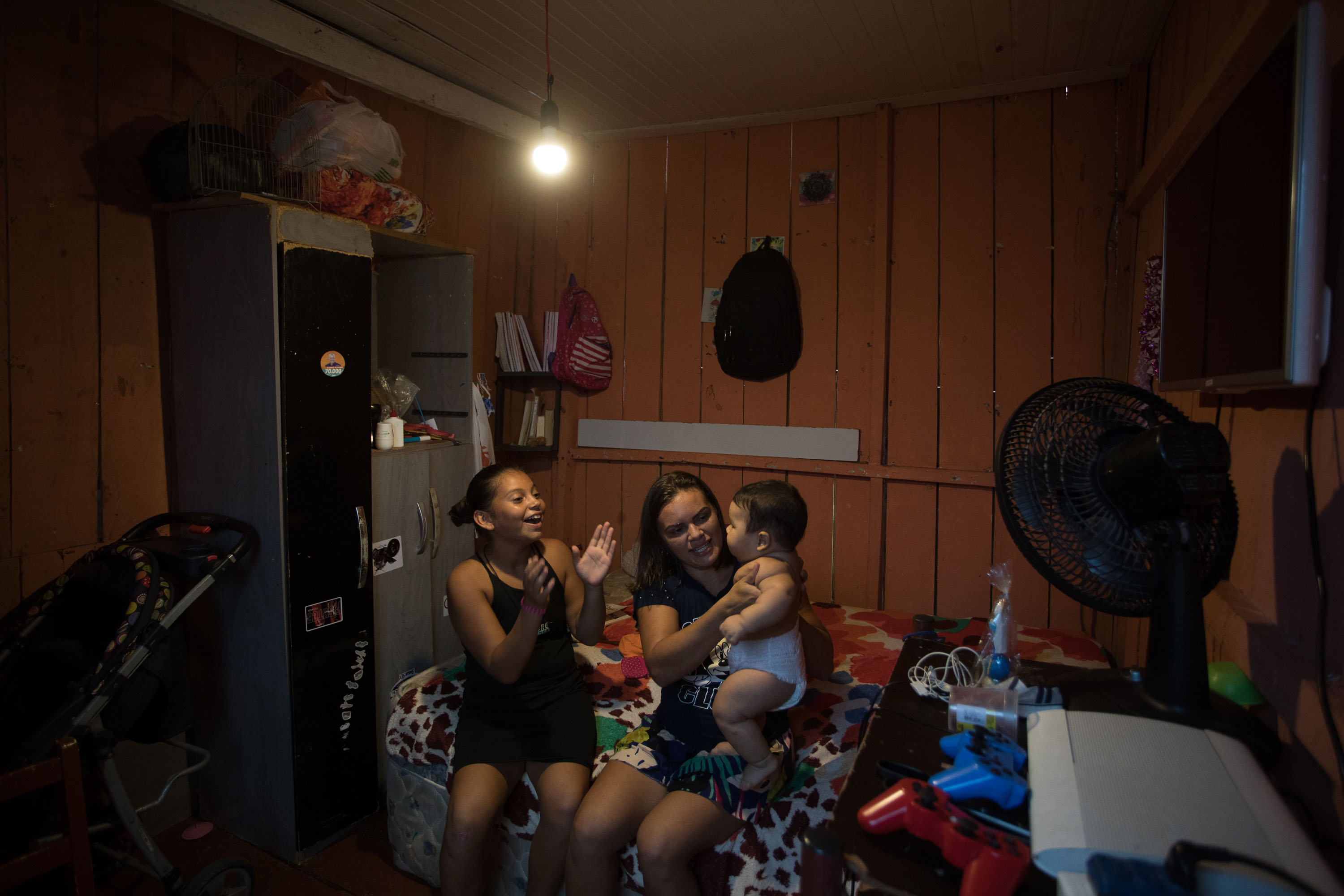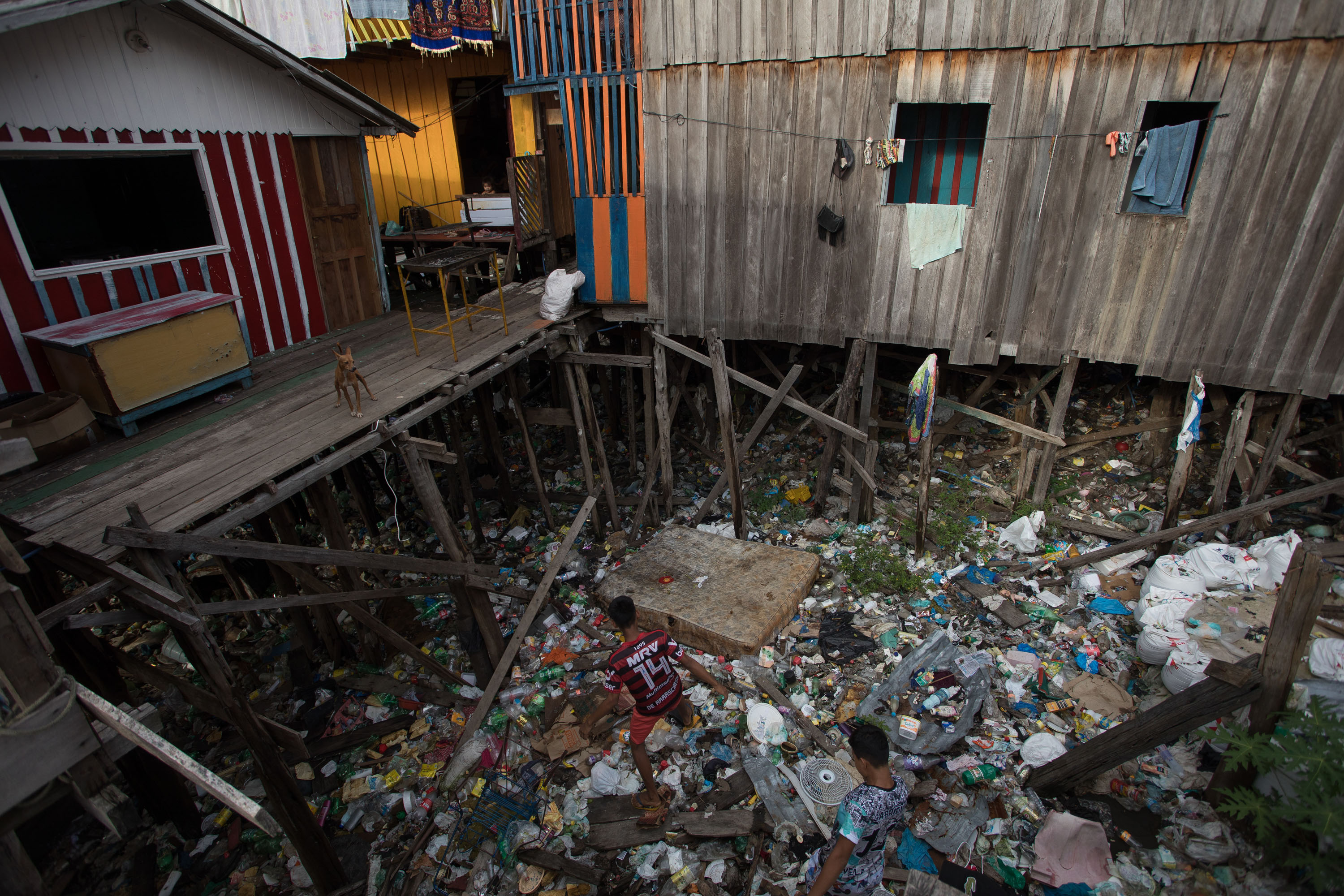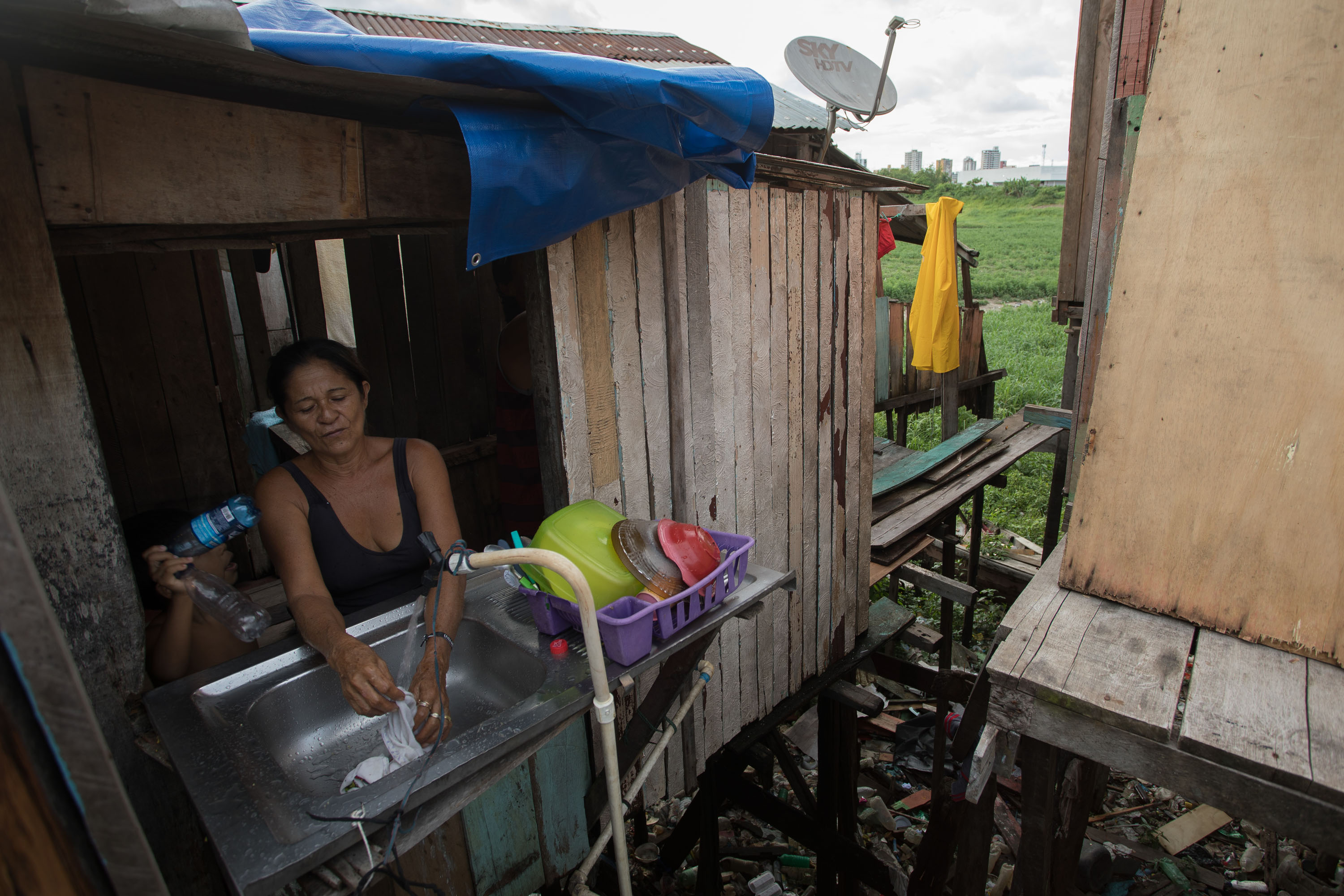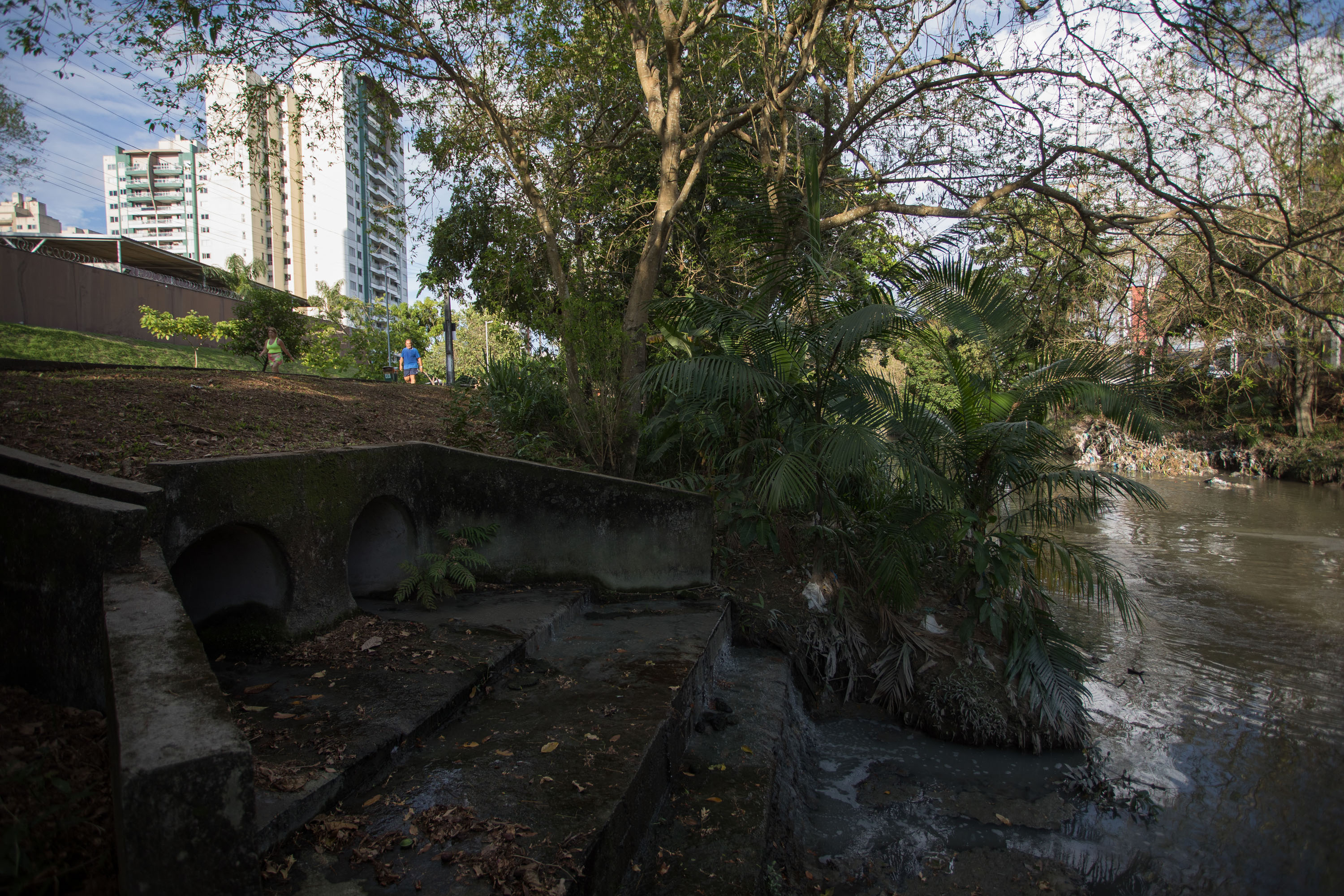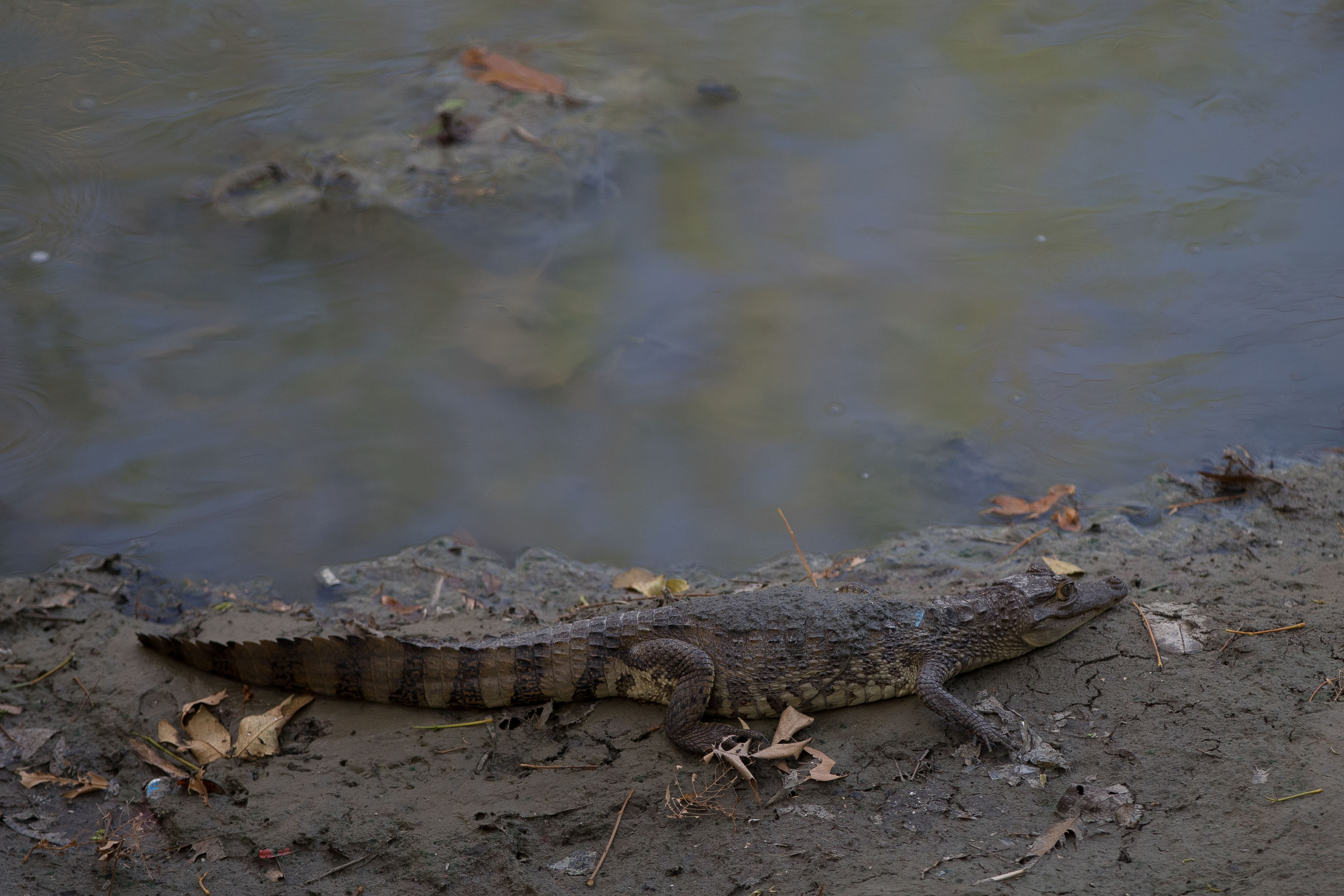In Manaus, the lack of sanitation is widespread, with wastewater pollution affecting the poorest.
In this third story connecting the health of the Amazon basin with algae blooms in the Caribbean, we show how conditions in the largest city in the region affect both people and the environment
Jeane Moura da Silva, 34, is a member of the third generation of residents of Educandos Creek, in the south end of Manaus, the largest city in the Amazon region. She lives with her three daughters, husband and grandson in the same place where her grandmother was born and raised and where everyone in the family learned to swim.
“My grandmother tied us up [around] the middle and threw us into the river. If you started to drown, she would pull the rope. It was like that with my uncles, brothers and cousins,” she says. “I wanted to teach my 10-year-old daughter here close to home, as my grandmother taught me, but I can’t.”
Educandos Creek is a tributary of the Negro River that together with the Solimões River forms the mighty Amazon in Brazilian territory. The Negro basin is one of the largest in the whole Amazon region, and it drains an area as big as France. According to the Amazon Waters Initiative, the Negro River “is the only large blackwater river in the Amazon Basin, accounting for approximately 13–14 percent of the total annual discharge of the Amazon River.”
The river’s black waters indicate a low level of sediment, and for most of its journey the river runs clean. It is host of some of the most biodiverse fauna and flora in the entire region.
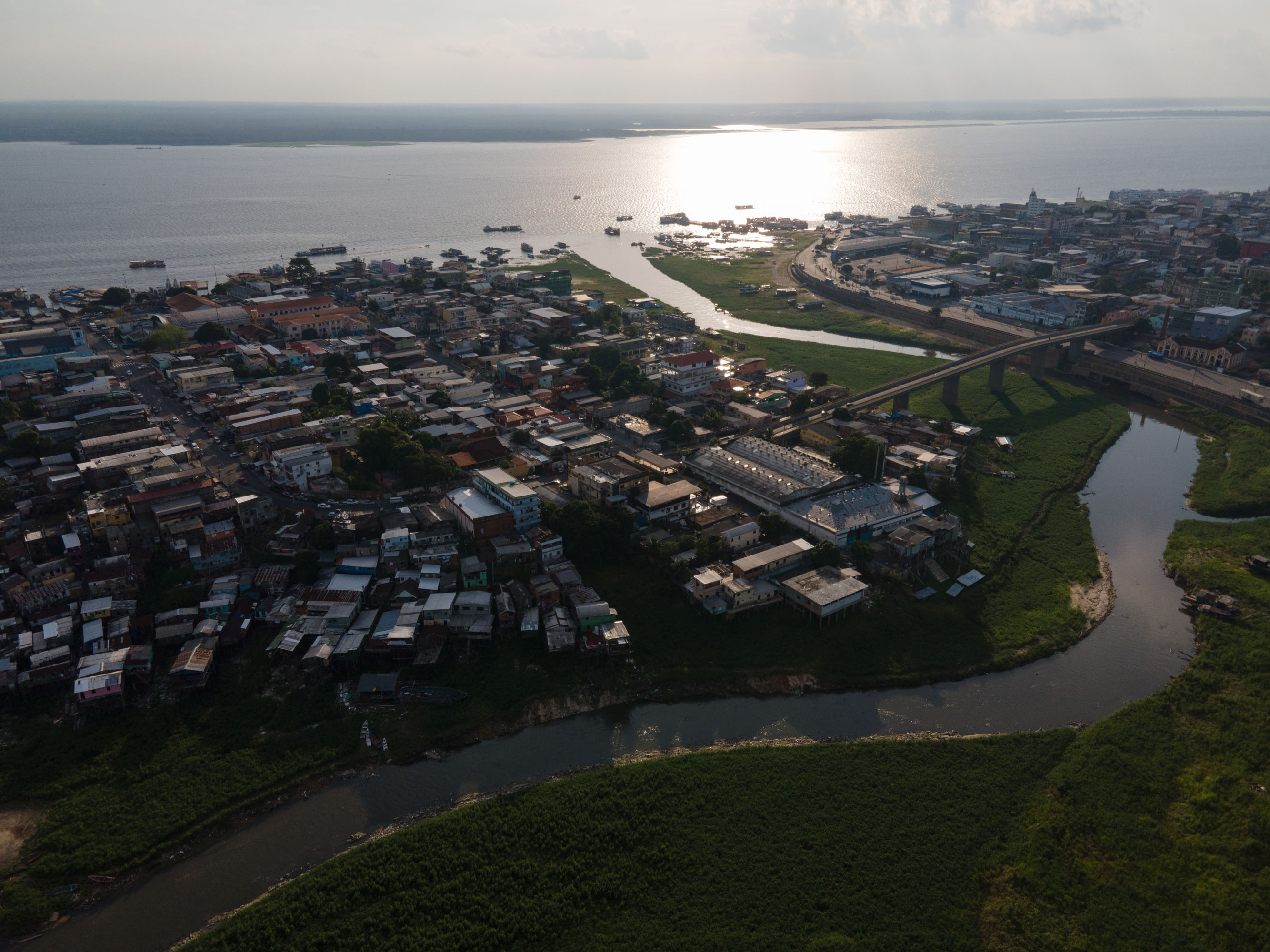
In the first decades of the 20th century, the Educandos was a healthy river too, surrounded by trees such as araçá (Eugenia stipitate) and tucumã (Astrocaryum aculeatum), as researcher Helen de Sousa Oliveira recorded in her 2007 master’s thesis at the Federal University of Amazonas. Between the 1960s and the 1970s, bathing spots spread across Manaus, drawing multiple social classes.
But the establishment of the Manaus Free Trade Zone in the late 1960s accelerated uncontrolled urban development and attracted a population that today totals 2.2 million inhabitants, the largest in the Amazon Region of Brazil.
Now Jeane lives in the Beco da Bomba, where a maze of bridges connects houses balancing on stilts to escape the seasonal floods. In this lower section of Educandos Creek, large quantities of garbage accumulate, either discarded here or washed downstream by the rains of the Amazonian winter, from December to May.
In Brazil’s Amazon Region, river dwellers, fishermen, and the largest indigenous population in the country depend on clean rivers for food, drink and transportation. Immense springs generating colossal amounts of freshwater give the impression that sewage, garbage and other pollutants do not cause problems because they’re only temporary and are quickly washed away. But the reality is different, says researcher Salete Almeida da Silva, from Fundação Oswaldo Cruz (Fiocruz), a public health research institution.
“The population is vulnerable. Studies point out that poor basic sanitation can bring back cholera, which had an outbreak in the 1990s. We continuously warn that the water is polluted and unfit for consumption, but nothing happens, nothing changes,” she explains.
The health of the river
It is not only people who are directly affected. As shown in the first story of this series, research in recent years provides evidence that large quantities of organic nutrients, such as nitrogen and phosphorous, are reaching the ocean and seeding algae blooms, which can have harmful, even toxic, effects on people and marine life. According to information collected on the origins of nitrogen discharged from the Amazon into the ocean, most comes from untreated sewage.
9 out of every 10 residents have no access to a sewage system in Manaus
Manaus has the sixth-largest Gross Domestic Product (GDP) of all Brazilian municipalities, totaling more than 78 billion reais (approximately US$20 billion) in 2018. Yet nine out of every 10 residents have no access to a sewage system, and only one-third of the city’s sewage and wastewater receives any type of treatment before being dumped into one of the hundreds of waterways that course through the city. Public data collected by Instituto Trata Brasil, a think-tank, show similar indices across the whole metropolitan region of Manaus, the capital of the Brazilian state of Amazonas.
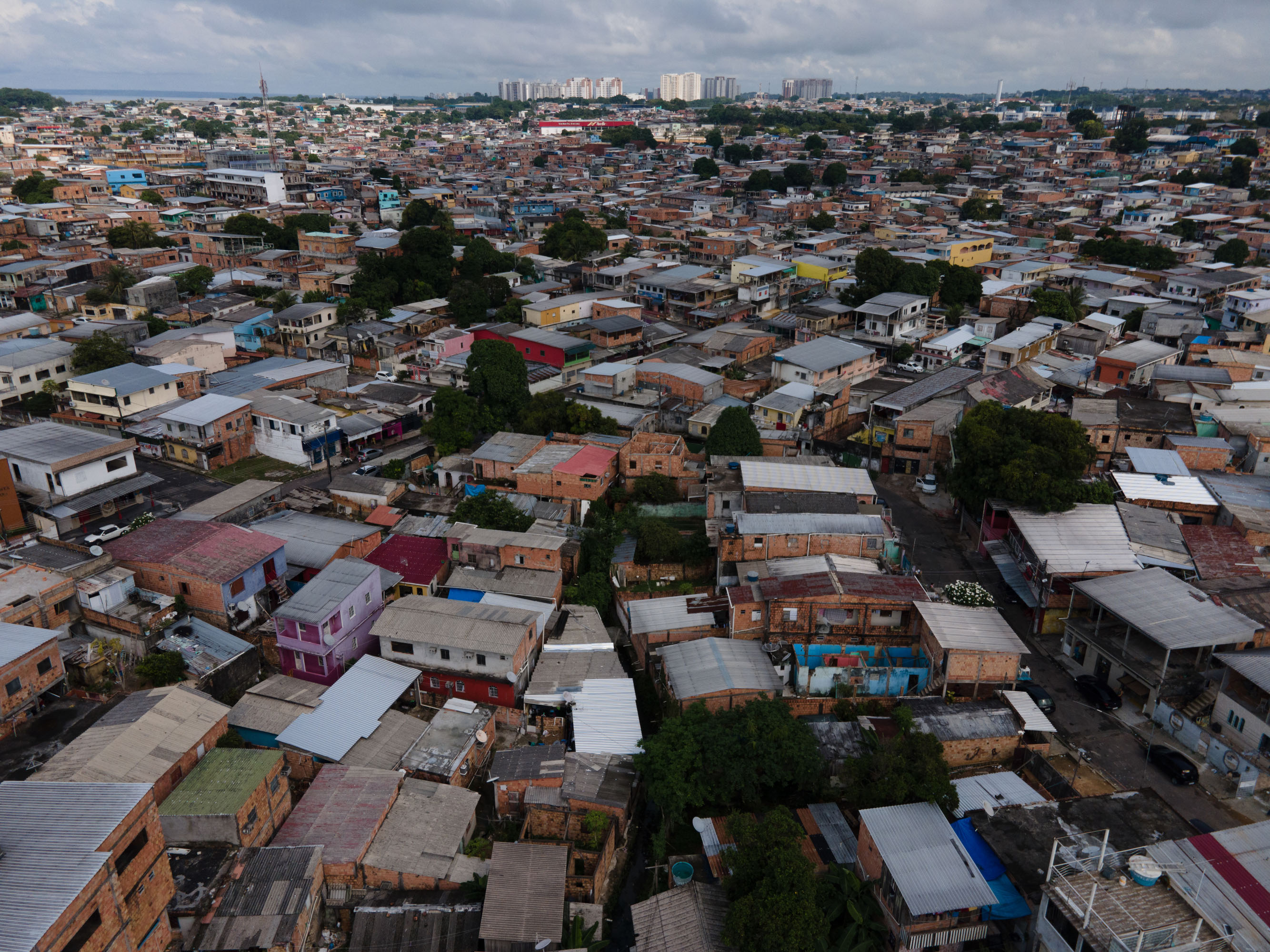
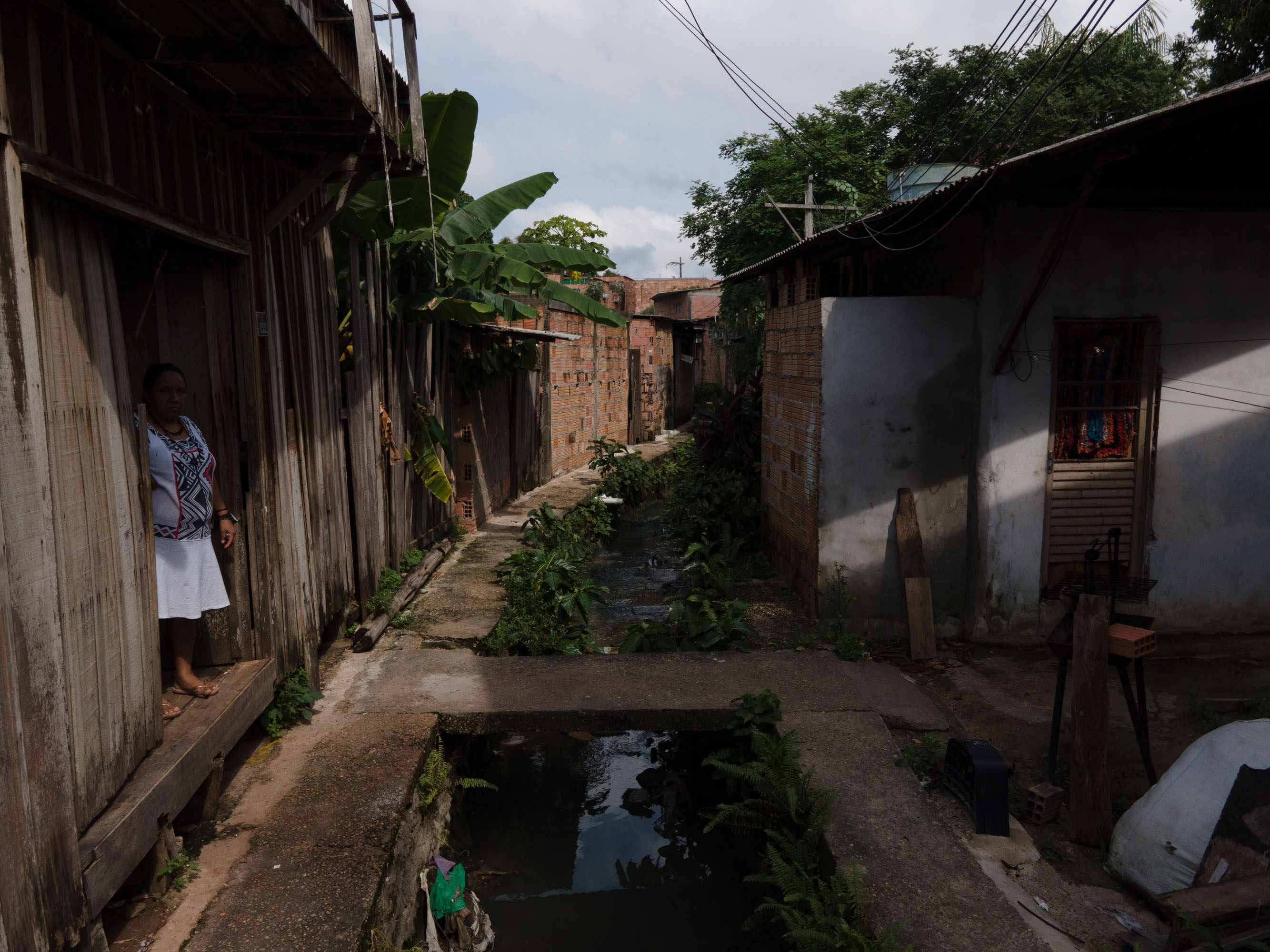

Creeks such as Educandos, Compensa and São Raimundo are discolored by sewage and choked with plastic bottles and bags, tires, mattresses and furniture. Half of the city’s residences are in slums, on stilts and in other informal settlements, according to the Brazilian Institute of Geography and Statistics (IBGE). Under the Forest Code of Brazil, the margins of rivers should not be occupied, but a map overlaying the creeks and informal settlements shows that these areas are directly correlated.
In the entire state of Amazonas, only 14.95% of the population of more than 4.1 million people, in both urban and rural areas, are effectively served by a sewage collection network, treated or otherwise, according to information from the National System of Information on Sanitation, a government database. In Manaus, which sits on 11 river basins, only 19.20% of the population is connected to a sewage system.
The reality is evident at the home of Dona Raimunda Conceição Oliveira das Neves, 62, at the end of the Beco do Amor, on Educandos Creek.
“The smell is the worst part. When it rains, it is scary,” she says.
Hamilton Leão, president of the Amazonian Citizenship Institute, a civil association that monitors public policies, is sharp with his criticism.
Manaus stinks. Sewage runs down the streets. The capital is vibrant and has a strong economy, but its leaders don’t accept their political responsibility to solve the problem. The city and its population do not deserve this treatment
says Hamilton Leão.
In a email responding to questions from InfoAmazonia, Manaus City Hall´s press office said that the sewage network in Manaus has more than 500 kilometers of pipes associated to 60 sewage treatment plants and 51 pumping stations. The statement also noted the need for a “culture change” on the part of residents since not all residents have joined the sewage network that exists.
“Currently, the sewage collection network is available to 20 percent of the population, but only 12 percent is connected,” the press office statement said. “Many residences still use other forms of disposing their sewage or septic tanks.”
Lack of basic sanitation is a chronic national problem
Almost four in every 10 municipalities in Brazil lack basic sanitation. And one in 10 Brazilian households — about nine million households in total — discharge their sewage into cesspits, ditches, rivers, or the sea. But while more than 90 percent of the municipalities in the Southeastern part of the country have basic sanitation, this number falls to 16 percent in the Northern region. About eight out of 10 inhabitants there live in households without sanitation, according to IBGE. The lack of sanitation ends up represented in a higher number of cases of waterborne diseases. According to the WHO, poor sanitation is linked to transmission of diseases such as cholera, diarrhoea, dysentery, hepatitis A, typhoid and polio and exacerbates stunting.
Fabiano Silva, the executive coordinator of the Vitória Amazônica Foundation, part of a regional collective trying to influence public policies for more sustainable development, says that the extreme lack of sanitation infrastructure in Manaus is common to the vast majority of Amazonian cities and municipalities. As in the rest of the country, regional urban growth has been unplanned and faced pressure from property speculators and illegal occupation.
“With no other alternative, urban and rural communities in Amazonia throw everything into the river. And more and more people are heading to cities in search of better lives and health services,” says Silva. “But cities are development nuclei that have an impact far beyond the area they directly occupy. Acting after the horse has bolted, by not having previously invested in sanitation, is always more expensive than acting earlier and in a planned way.”
The politics of wastewater
“As well as being a sanitary issue, sanitation is also political,” says Adjalma Nogueira, an IBGE Geographic Information and Statistics expert.
Cities in the Amazon region have a strong relationship with water and almost all are traversed by rivers and creeks, he says. But there is a historical lack of interest among the local authorities in spending resources on infrastructure that is meant to be invisible.
“When a city grows through spontaneous land occupation, the banks of these watercourses are settled in an uncontrolled way. The population starts using them to deposit their waste and garbage. Even in areas where there are no watercourses, sanitary conditions are often impacted by the lack of drainage and sewage systems,” Nogueira explains.
“Some private condominiums have their own treatment systems, but no one knows the results: if there is proper treatment if there is regular maintenance if the regulations are adhered to. Officially speaking, we don’t know what kind of water we drink, what kind of waste is thrown into the Rio Negro,” says Sérgio Bringel of the State University of Amazonas and a researcher at the National Institute for Amazon Research (INPA).
Among the political issues that directly affect nature, Bringel cites the “legal loopholes” explored by the state government. Although the release of raw sewage into rivers is not permitted, a document called the Letter of Manaus written in 2013 by a group of engineers and other experts supported the view the Negro River, “as bodies receiving sanitary effluents, via alternative treatment and discharge, through a sub-fluvial outfall, considering self-purification in water bodies with large dilution capacity.”
Basically, because of its acidic PH and large volume of water, the authors of the Letter of Manaus considered the Negro River capable of sustaining a large quantity of effluents.
The assessment backing the Letter of Manaus was carried out at the time in 2013 by sanitation technicians and engineers, academics, and representatives of national, state and municipal governments, all brought together by the Government of Amazonas and the Inter-American Development Bank.
According to Bringel, however, the special characteristics of the waters of the Negro River require further studies and public consultations on the real impacts of discharging sewage into the waterway.
“This way, we can understand how the waste material affects the chemistry and dynamics of the river and its fauna and flora. Manaus has released its effluents without treatment into the Rio Negro since the 1970s.
Sanitation deficit
Édison Carlos, the executive president of Trata Brasil, stresses that over the years national investments in basic sanitation have not kept pace with the growth and concentration of the population in cities. In addition, government officials continue to prioritize the supply of treated water as the most visible part of investments, while the population undervalues and often does not want to pay for the collection and treatment of their waste.
The Brazilian situation is the result of a lack of planning and investment. While water is the favoured aspect of sanitation, sewage has historically been seen as a problem. Treated water leads to votes, while we can deal with sewage later. But it all comes at a price.
says Carlos.
Aegea Saneamento, one of the largest private sanitation companies in the country, has been in charge of all services provided by Águas de Manaus since June 2018. Águas de Manaus is the operator serving all of Manaus City. The company says it has already made more than R$300 million (US$53.8 million) in investments in two and a half years and plans to expand the coverage of its sewage collection and treatment network to 80 percent of the city’s population by the year 2030.
Since July 2020, Brazil has also had a new national basic sanitation policy. The legislation requires that at least nine out of 10 Brazilians have access to drinking water, sewage collection and treatment by 2033. Currently, half the population, or 105 million people, have no sewage service, and 16 percent, 34 million inhabitants, have no treated water.
The Brazilian Association of Private Concessionaires of Public Water and Sewage Services (Abcon) and KPMG consultants have estimated that the investments the country will need to make to achieve this leap in basic sanitation in just over a decade are around R$753 billion (approximately US$140 billion). The figure covers the installation and maintenance of water supply and sewage systems. Resolving the situation in the Northern Region, however, will require R$54 billion, less than seven percent of the total but still a challenging amount to come up with.
“[The Amazon] was the region that [was] least advanced historically. The other regions, even though they didn’t advance as much, advanced more than [Brazil´s] Northern region. One of the characteristics of the North is the fragility of the local state companies. The great majority of these state companies have a very weak financial situation,” said Édison Carlos from Trata Brasil, who also points out that private investment will be needed to achieve the goals of expanded coverage.
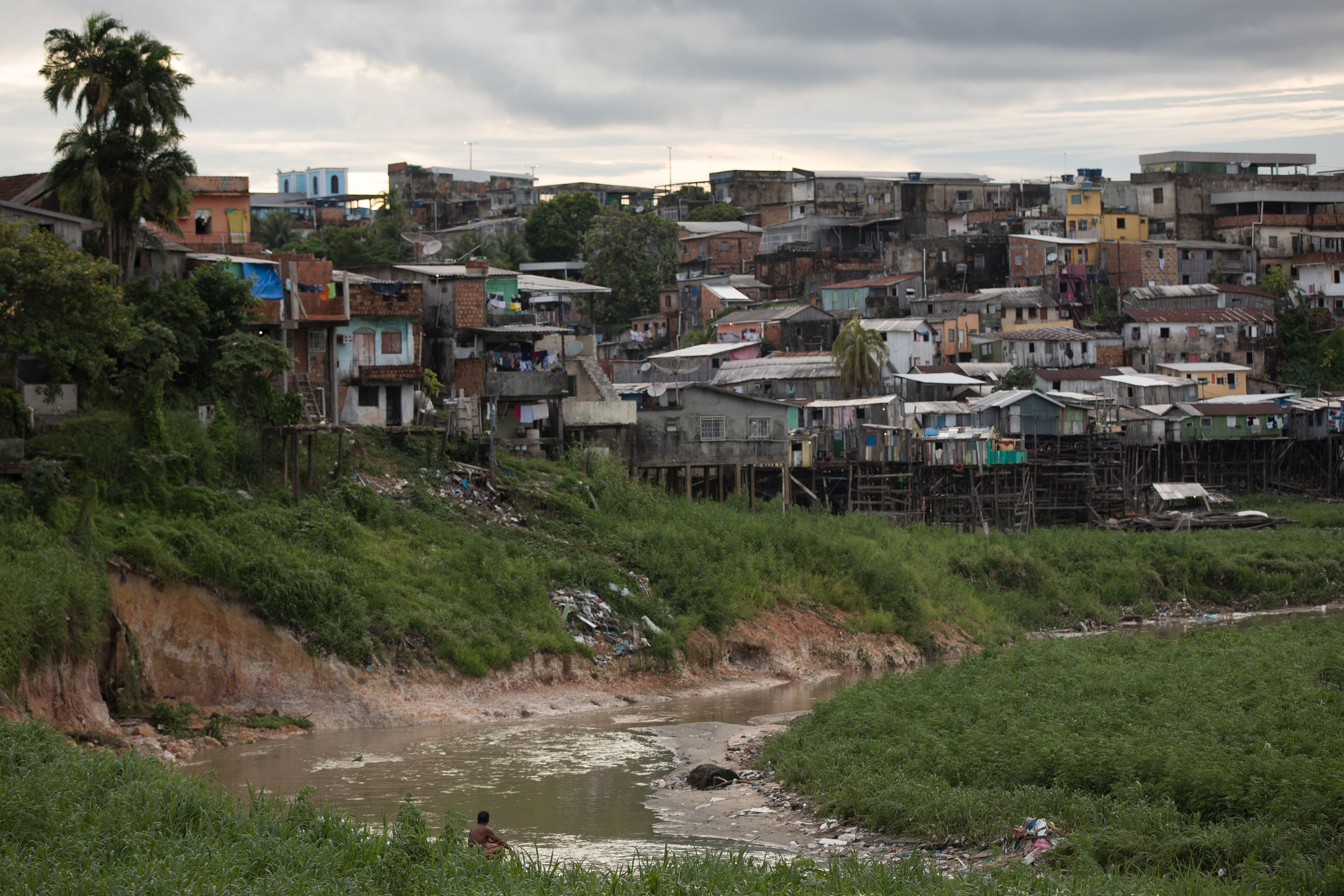
In the 1970s, an average of 0.6 percent of Brazil’s GDP was invested in basic sanitation. Between 2003 and 2018, this rate fell to just 0.2% of GDP, with annual investments of around R$12.6 billion. In 2018, R$13.1 billion was invested. At the current rate of — mainly public — investment, Abcon and KPMG point out that widespread water and sewage treatment will only become available to all Brazilians in 2055.
In an attempt to circumvent political and budgetary shortfalls the new legislation clears the way for the expanded participation of the private sector. Tendering for contracting services will no longer give greater preference to state-owned companies. Municipalities will be able to join together in consortia to improve their sanitary conditions.
“If auctions are successful, they will attract companies and resources that can resolve the issue of sanitation in the Northern Region,” Carlos said. “But COVID-19 could push even more people into cities in search of the health services that have been shown to be flawed in the pandemic across its vast territory. [If so,] the lack of health and sanitation services will continue to take a heavy toll on the region.”
This story was produced by InfoAmazonia with support from Internews’ Earth Journalism Network. It was translated by Tony Gross and edited by James Fahn and Gustavo Faleiros.
Banner Image: The neighborhood and creek of Educandos, located in the central region and near the port of Manaus, known as Manaus Moderna Credit: Bruno Kelly.


